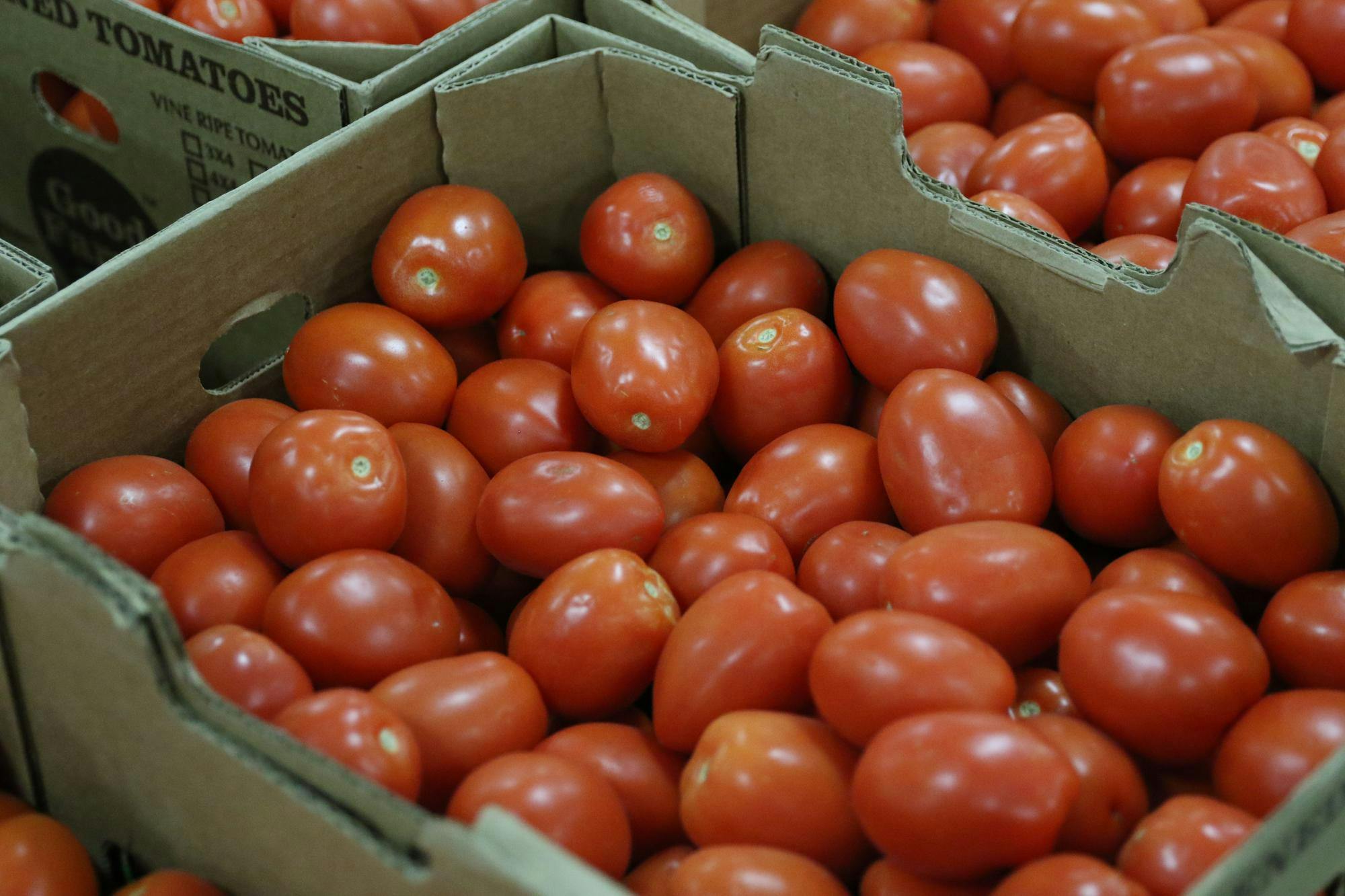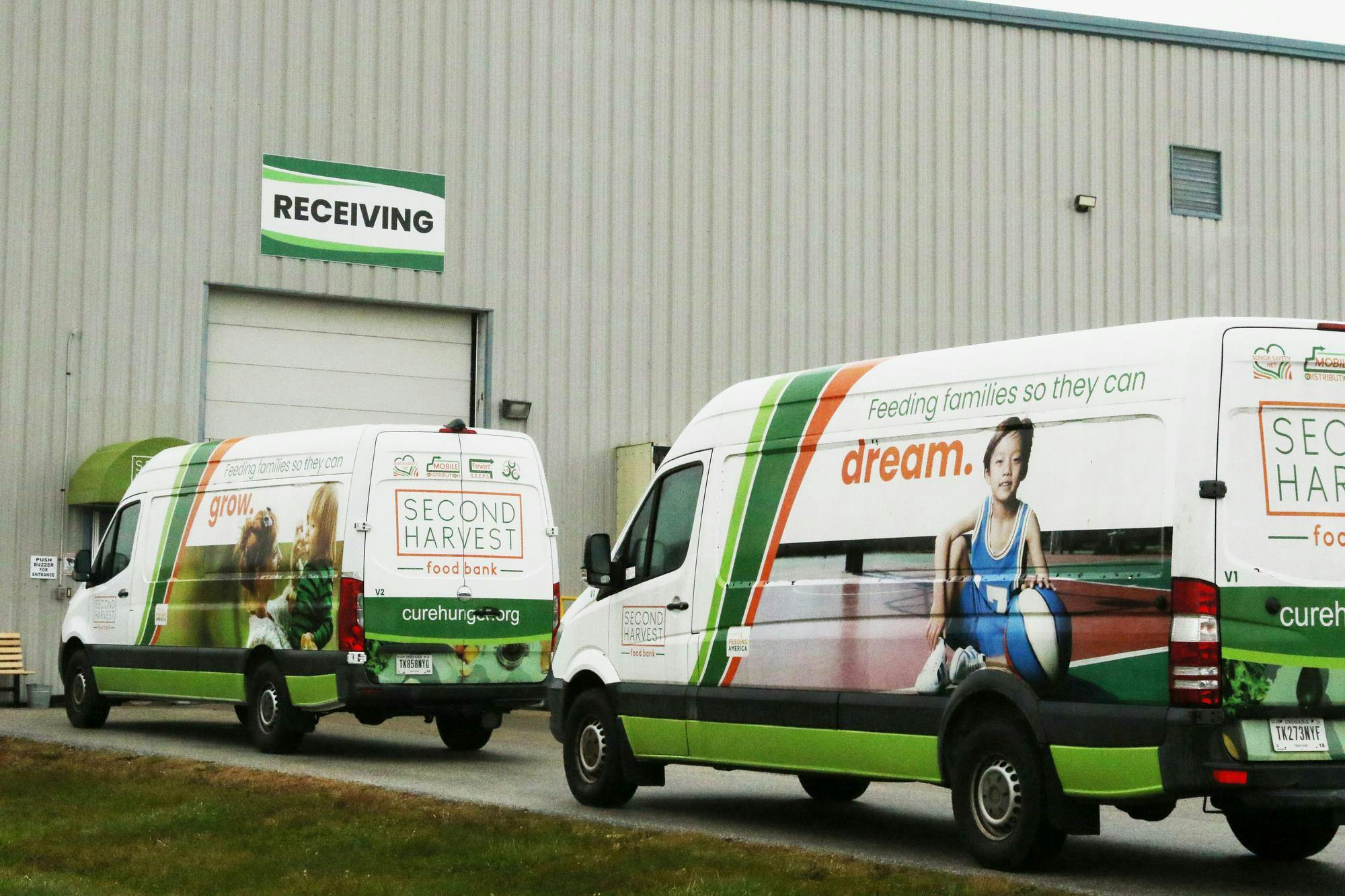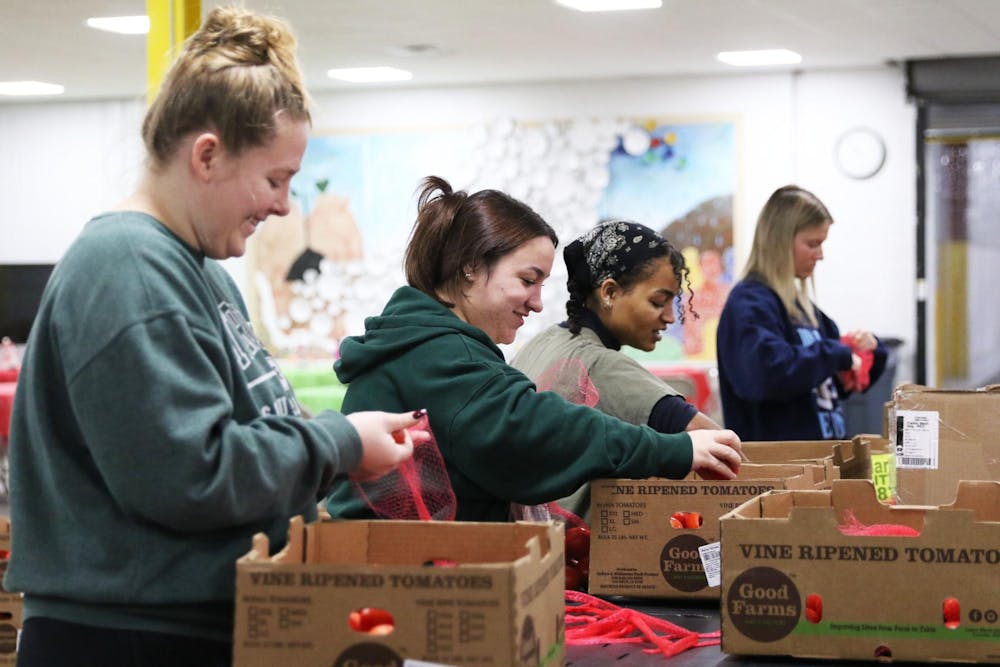The warehouse-turned-food bank on Old State Road has seen a plethora of different food pallets across the previous four decades, along with an average of 4,000 volunteers each year.
Every morning at the food bank, volunteers and staff show up ready to work, either packing boxes, organizing produce or connecting with community members.
Together, they dream of doing much more than just eliminating food insecurity.
Across Delaware County, and eight other neighboring counties, Second Harvest Food Bank of East Central Indiana is hoping to simultaneously feed, educate and better the lives of those they help.
“We at Second Harvest believe that everyone deserves dignity and deserves to not go hungry,” Robby Tompkins, former director of philanthropy at Second Harvest said. “It's not just about throwing food at the problem, it's working with folks and making sure that we help the person and family as a whole.”

Tompkins worked at Second Harvest for 3 ½ years, being drawn to the non-profit due to what he described as “lived experience” in food lines. Along with this lived experience, Tompkins recognized that the work at Second Harvest was something special and unique.
The initiatives at Second Harvest are also important to the community as, according to the organization's website, 13.6 percent of Delaware County faces food insecurity.
This equates to 15,270 people in Delaware County who each day don’t know where their next meal will come from.
Tompkins helped run projects aimed at expanding its role within the Muncie community with hopes that the organization can create a world free from the cycles of generational poverty.
To achieve this, Second Harvest focuses on different locations and demographics within the community that make the most impact.
Recently, the non-profit has realized that even with continued community efforts, they cannot always reach those who need to be helped. In turn, ‘Mobile Market’ vans were created and designed to drive out and serve more constrained, rural areas.
Once these mobile markets are set up, and with an upcoming DoorDash partnership, community members within a 10-mile radius of the van will be able to request food directly to their doorstep for free.
“To be able to actually reach folks who are now homebound or physically disabled or don't have a vehicle and can't come to us, it’s extremely impactful,” Tompkins said. “We're hearing stories of homeless veterans living out in the woods that are getting food from our initiative that we would never have been able to reach.”
Another one of the places the food bank focuses on is local schools, which through the bank's school initiative, offers numerous different experiences for kids of all ages.
One of these experiences is a makeshift food mart that is set up in a participating school. Here, parents and students get to shop together, interacting with school staff who in turn find out what student life is like at home.
“It's inspiring the kids and the parents to have big ideas for their future, and what they want to be when they grow up,” Tompkins said. “It's all about the whole family.”
Over the summer, Second Harvest continued work in another of their missions, helping for today, and hope for tomorrow, by creating a community garden. Here, volunteers, community organizations, and neighbors came together and learned how to grow their own food.

Second Harvest 'Mobile Markets' sit waiting to be driven Dec. 1 at Second Harvest food bank in Muncie, Indiana. Trinity Rea, DN
A big portion of volunteers in the garden were a part of TeenWorks, an organization that provides high school students with a six-week summer job. In turn, the skills they learn here propel them into their futures, college, and beyond.
“Teens are so impressionable. When they first walk in, they might have attitudes, but then at the end of the day, they hug me goodbye like they're never going to see me again,” Tina Clifton, volunteer coordinator at Second Harvest said.
Clifton has been with Second Harvest since the beginning of June and has worked closest with operations surrounding teen engagement within the community and with the community garden project. She says the experiences shared with them over the summer are what motivate her to wake up and work each morning.
While Clifton attributed her work in the garden to holding some of her favorite memories, she primarily finds herself in the warehouse. Here, she works all day with volunteers from across the county who come together to help their neighbors.
“On average, we serve about 10,000 people an event… unfortunately, the need is going up… one in seven people throughout the country are food insecure,” Tompkins said.
Unlike the rest of the country, the amount of food-insecure individuals has gone down in recent years here in Delaware County. According to the FeedingAmerica website, between 2017 and 2021, the rate of food-insecure people has gone down by 2.5 percent.
Over the time of this decline, Second Harvest expanded its operations and reached more people than ever. The food bank has been continuously expanding its reach and has brought in people like Clifton to help organize, manage, and recruit more volunteers.
A lot of these volunteers have been Ball State students, working for their peers, and Muncie locals who need help.

“I volunteer about twice a week and I genuinely do like my time here,” second-year nursing student Emelia Paris said. “It's simple and it's rewarding because I know that it's going to people that need it.”
Paris admitted that while she initially visited the food bank for course credit, she has been coming back on her own accord, enjoying the work that is done here. Along with this, each time she’s volunteered, Paris said that meeting other students and making lasting connections has felt good.
Paris says Ball State students who are interested or would like to help, volunteering at Second Harvest is a great place to start. She attributes this to the laid-back environment which comes with shared recognition that the work they do might be hard, but is important.
For those looking to help fight food insecurity with Second Harvest, head to their website and visit the ‘Get Involved’ section.
Contact Trinity Rea via email at trinity.rea@bsu.edu or on X @thetrinityrea.





